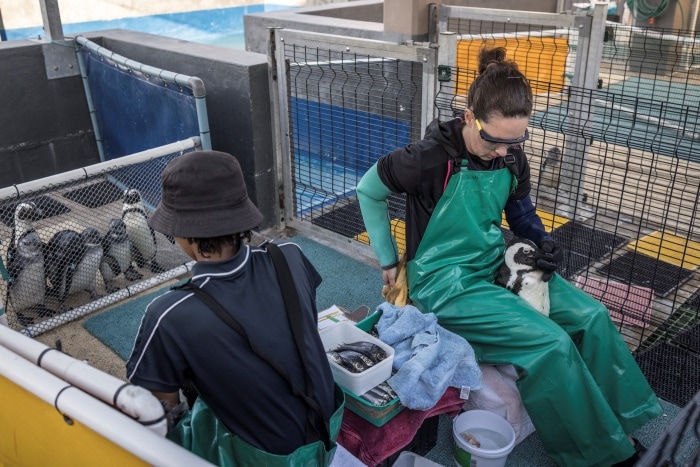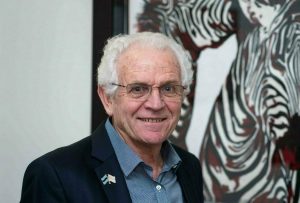A dedicated rehabilitation center in Gqeberha is on a mission to save the African penguin species from extinction.
“We are trying to reverse some of the damage that people have done to these birds over the years,” says Caitlin van der Merwe of the South African National Foundation for the Conservation of Shorebirds (Sanccob).
The threat of climate change and human activities has already severely affected the population growth of this species of penguins.
About 50,000 penguin pairs inhabited the coastlines of South Africa and Namibia three decades ago. That number has since decreased to 10,000 pairs.
This is a decrease of 80% in the penguins’ population. Zoologists say this is extremely worrying, as a healthy penguin population is also an indicator of a healthy marine ecosystem.
“The species’ population is declining. This means that there is a big problem in the marine environment,” says Carl Havemann, head of the penguin clinic in the Eastern Cape.
At this stage, this clinic is full of sick penguins and in the last two weeks a total of 40 chicks from Bird Island have been transferred there. This island is home to one of Africa’s largest populations and is located about 60 km from Gqeberha.

However, recent rains washed away several nests and caused chicks to drown or die from hypothermia.
Because the penguins’ nests – which are a mixture of dung and remains that accumulate over time – are plundered by humans for natural fertiliser, the penguins now have to cope with branches or cracks in the rocks that do not make as sturdy a home as theirs natural nests do not.
“With climate change, weather conditions are becoming more and more extreme and this is also now affecting natural colonies,” says Havemann.
Some of the penguins that did survive the harsh weather are currently being treated in the rehabilitation center’s intensive care unit.
Staff are scrambling to disinfect, sew up and administer medication to all one hundred of the little ones’ wounds, while they also spoil the little patients with a foot bath and sardines.
Groups of penguins huddle together because of all the activity, while others get nutrition through a small tube in the gullet. Unfortunately, some of the penguins that cannot be saved must also be put down.

Those who are fit enough frolic in the pool as part of the rehabilitation process.
“If they don’t swim, they don’t drink,” says Van der Merwe.
However, the aim is to release the penguins back into the wild within the shortest possible time so that the interaction with people is limited.
In addition to the changing weather conditions, African penguins’ numbers are also threatened by disease, overfishing and pollution.
Gqeberha has one of the largest ports in South Africa and large cargo ships are filled with fuel in the port. Fuel spills mean conservation organizations must also scramble to save oil-covered penguins.
According to the minister of environmental affairs, African penguins could become extinct within a decade at the current rate.
“The sea is complex. If we take pieces here and there, the whole system will collapse,” says Van der Merwe.








